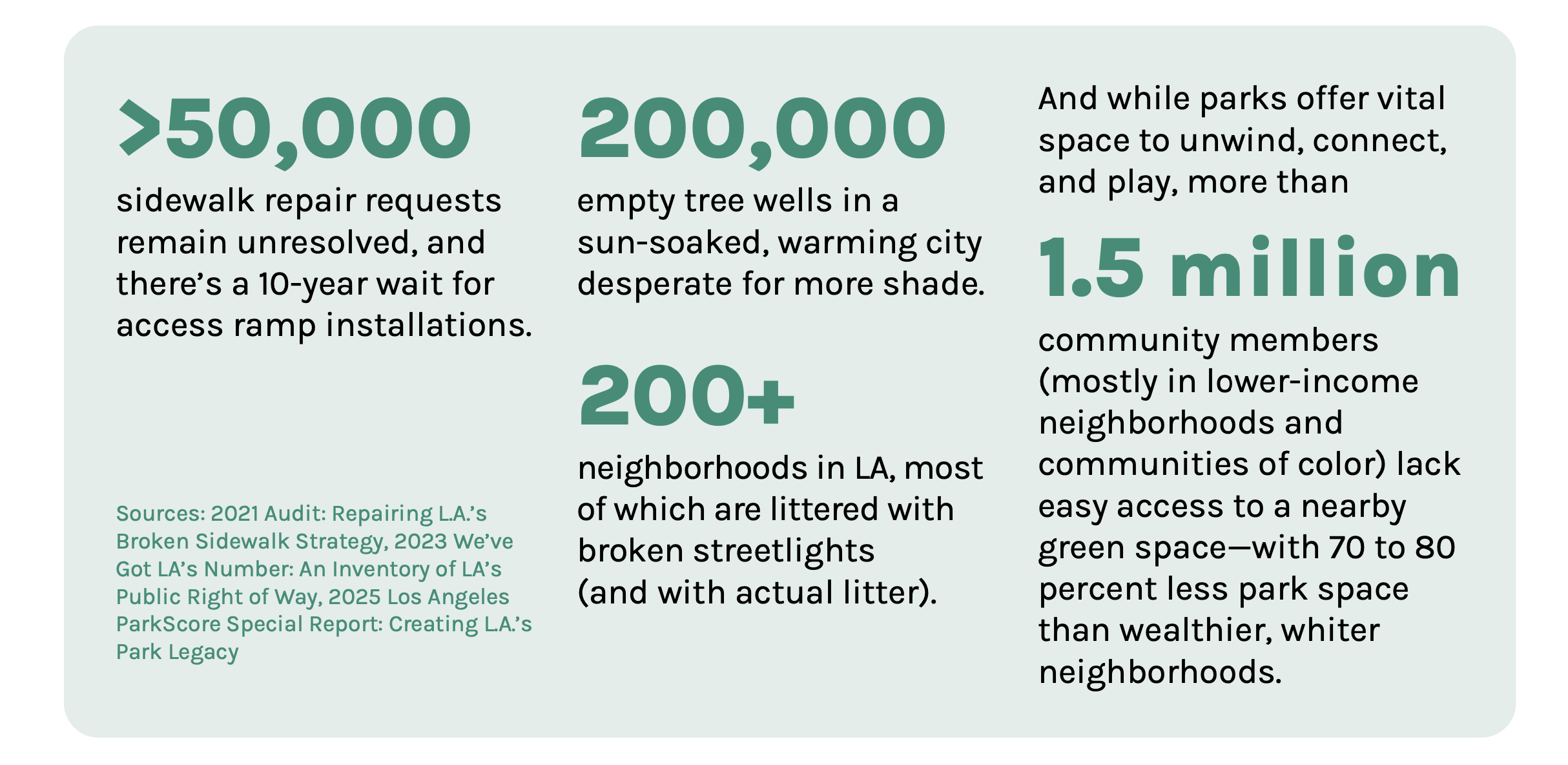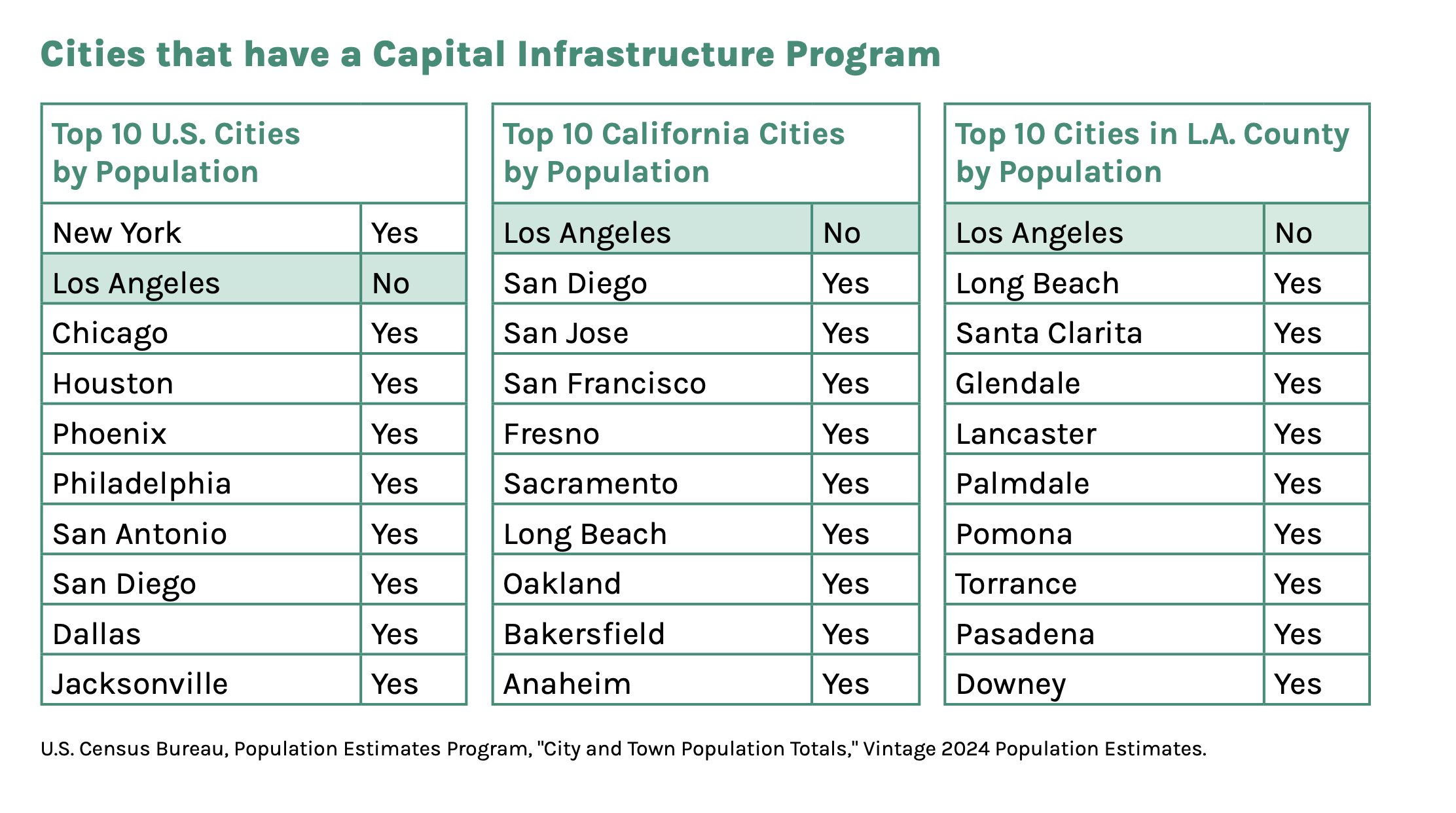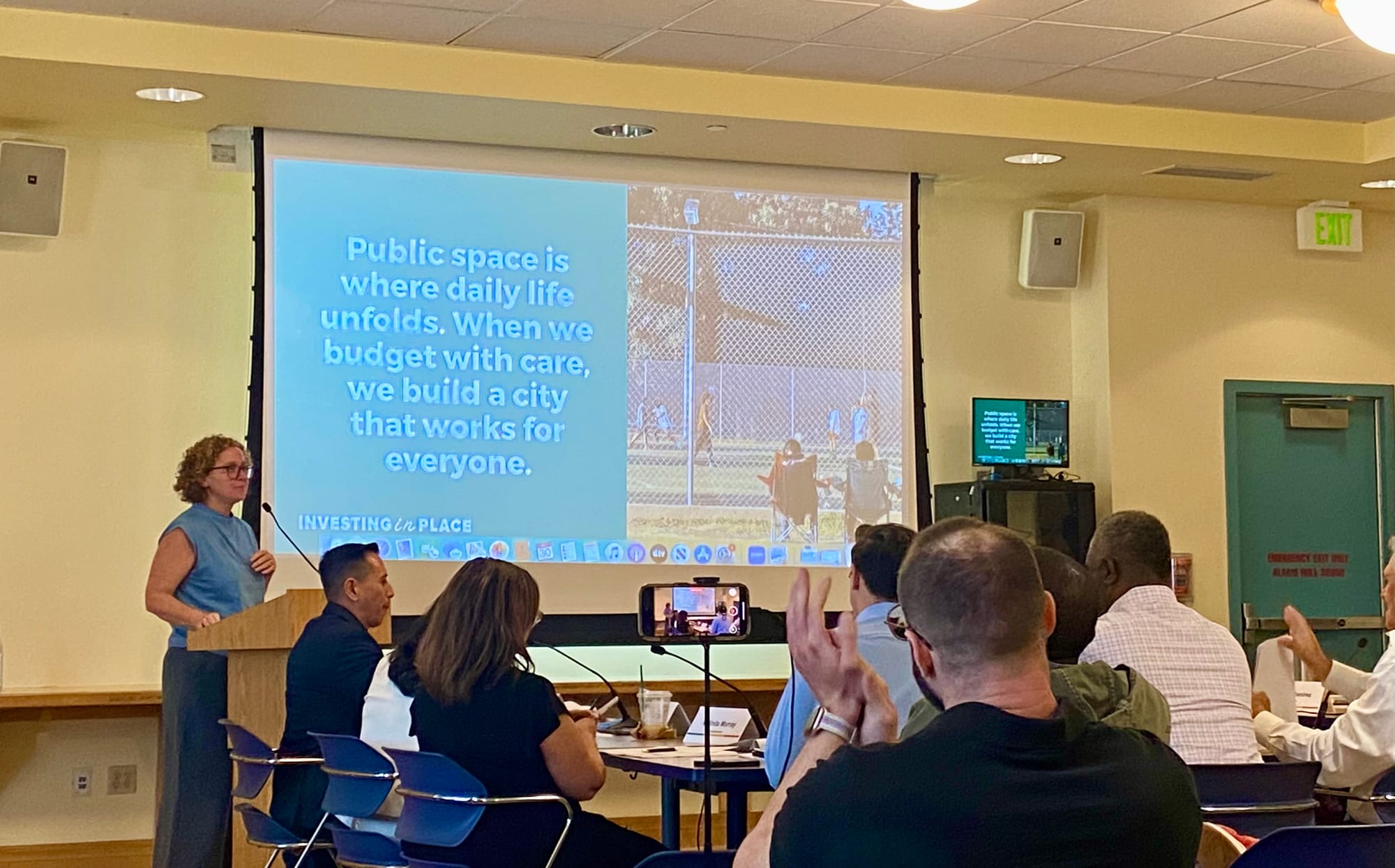Torched Talks with Paralympian Candace Cable
A conversation on disability and megaevents on December 15
What Angelenos need right now, more than ever, is a commitment to the spaces that we share with each other

Think back to October 2024 — if you can bear it. Los Angeles's fiscal emergency wasn't quite official. A Trump victory still felt like a somewhat distant possibility. And the city had not yet been walloped by the double whammies of fire and ICE. In those last hopeful weeks of 2024, LA Mayor Karen Bass signed Executive Directive 9, instructing departments to create LA's first-ever capital infrastructure plan, or CIP, to ensure that our investments in our public spaces were guided by shared, citywide goals. I was hopeful.
But as time has gone by, in a city battered by crisis after crisis, progress on the CIP has been slow. In March, I reported that the city's first CIP would actually be focused around improvements for upcoming megaevents, dubbed the "Games CIP." Nine months after ED 9, the reality of its implementation has become painfully clear. Making sure LA has a true, citywide CIP — we're the only major U.S. city without one — is too important to be left up to a slow-moving voluntary process that may not live beyond the Bass administration. Transforming the way LA does capital planning should really be codified into the city's charter, which is, conveniently, currently in the process of being overhauled. So Investing in Place — the nonprofit that's been pushing for LA to adopt a CIP for over a decade — convened the Public Space Leadership Council, two dozen civic leaders who have met regularly throughout the first half of 2025 to determine the specific structural reforms LA's public spaces need. And today, Investing in Place presented those 16 recommendations at the city's charter reform commission meeting focused on planning and infrastructure. The report is entitled: "A City That Works: Public Space as a Civic Promise."
"Angelenos face broken and inaccessible sidewalks, dark streets, closed pools, empty tree wells, and a lack of shade," says Jessica Meaney, Investing in Place's executive director. "These are everyday failures that signal deeper issues with how the city plans, budgets, and delivers the basic services we all deserve. The good news: We know how to fix this and we’ve laid out the steps to get there."

Just to combat one misconception before I get into those steps — an entire page of the report is dedicated to debunking myths — LA does have the money to make big changes, if we change the way it's spent. Despite LA's budget bloodbath, one line item that didn't significantly shift was the approximately $1 billion allocated to infrastructure spending annually. And as Meaney and her team spoke with chronically overworked city employees, a unified message emerged: now more than ever, the city needs to operate with more efficiency and fewer redundancies, with clearly stated, multi-year work plans. As the report notes: "It's possible to have a city that works as a system, where public dollars are used wisely, where staff can plan ahead, and where every neighborhood is treated with care and intention."
The 16 recommendations laid out in the report set LA on that course. A full third of the recommendations are devoted to major internal systems change: establishing a "state of good repair" policy, integrating climate standards, dedicating maintenance funding, and incorporating life-of-project estimates into all capital investments. There's also a call for greater transparency, like a metrics-based project delivery system, with annual audits. And I really love this one: a citywide, public-facing, real-time asset management system. Imagine being able to tap through a map of your neighborhood, seeing which projects are being prioritized, the timeline for completion, and how they're performing once installed. Just like what Long Beach has done.

Some of the recommendations would require charter amendments, which could hypothetically be made through a measure that the charter reform committee intends to place on the November 2026 ballot. The Public Space Leadership Council wants the city to amend the charter to both require a 5-year CIP and move to a 2-year budgeting cycle. And — this is a big one, as councilmembers have recently been discussing going back to voters for more money for parks, streetlights, and transportation improvements — the recommendations ask the city to commit to not asking taxpayers for more public space dollars unless that 5-year CIP is in place. Seems more than reasonable.
Another key recommendation would also require a charter amendment: dissolving the city's Board of Public Works, which functions more like the all-volunteer city commissions, but is, for some reason, a five-member salaried board. This would trigger a complete restructuring of the Department of Public Works, which the Public Space Leadership Council thinks should be overseen by a single director. And there's a suggestion to explore consolidating LA's Department of Transportation — yep, a completely separate department! — within this restructured Department of Public Works, as well. This issue seemed to be on Bass's mind; in her brief remarks before the charter reform commission today, she was sure to point out the inanity of coordinating between a dozen city agencies just to make basic improvements to the street.
I was also pleased to see several recommendations to streamline and clarify capital planning for LA's parks department, where our 90-out-of-100 ranking shows the status quo clearly isn't working. While the city is currently conducting its own separate parks needs assessment, thinking about one continuous "public realm" is also the only way that our streets and sidewalks — LA's most vast and underutilized assets — will ever be treated more like parks. It's a "foundational step toward building public spaces that reflect who we are as a city and serve the everyday needs of Angelenos," says Public Space Leadership Council member Connie Chung, who is also managing partner at HR&A Advisors, which is currently working on the financial analysis for LA's park needs assessment. "Managing public space well requires more than good design — it takes vision, coordination, and long-term investment."

When discussing a CIP you might have heard LA officials interchange "infrastructure" for "improvements" and "plan" for "program" — do we need a CIP just to name the CIP? But the Public Space Leadership Council is pushing for Capital Infrastructure Program, for two very important reasons. One, because it's not just about making improvements, it's about maintaining a state of good infrastructural repair. And two, operating a program infers that it's budgeted, funded, and implemented — unlike a plan. Not sure if you've noticed: LA has no shortage of plans, but very little to show for them.
Because a program — one single program, not a handful of plans, and definitely not a separate plan for megaevents — is what we need as the city engages with the realities of repairing fire-damaged streets in one neighborhood while preparing sidewalks for millions more summer visitors in another neighborhood. These projects should be two implementations of the same shared strategy that you can see rolled out on every LA block. "Our public infrastructure tells a story about who we are and what we value as a city," says Jason Foster, Public Space Leadership Council member and CEO of Destination Crenshaw, who, as Torched readers will remember, has been calling for a CIP since last year. "Creating a Capital Infrastructure Program can change the narrative about how public funds are used by investing in places like the Crenshaw District with the care, transparency, and consistency that acknowledges each neighborhood's cultural legacy and the everyday lives of its community members."
And that's really what it's about. There will always be more crises. Instead of abandoning the public realm — which is, honestly, what it feels like LA has done! — our leaders need to prioritize the places we can find community and confluence, solidarity and solace. The same places that, with a little more foresight, can also become our best defense to tackle those crises.
"So much today feels out of our hands: devastating fires, immigration crackdowns that leave our families and friends feeling unsafe, and economic uncertainty," agrees Meaney. "Now is a good time to focus on what local government can do well, especially when it comes to caring for communities." And what Angelenos need right now, more than ever, is a commitment to the spaces that we share with each other. 🔥